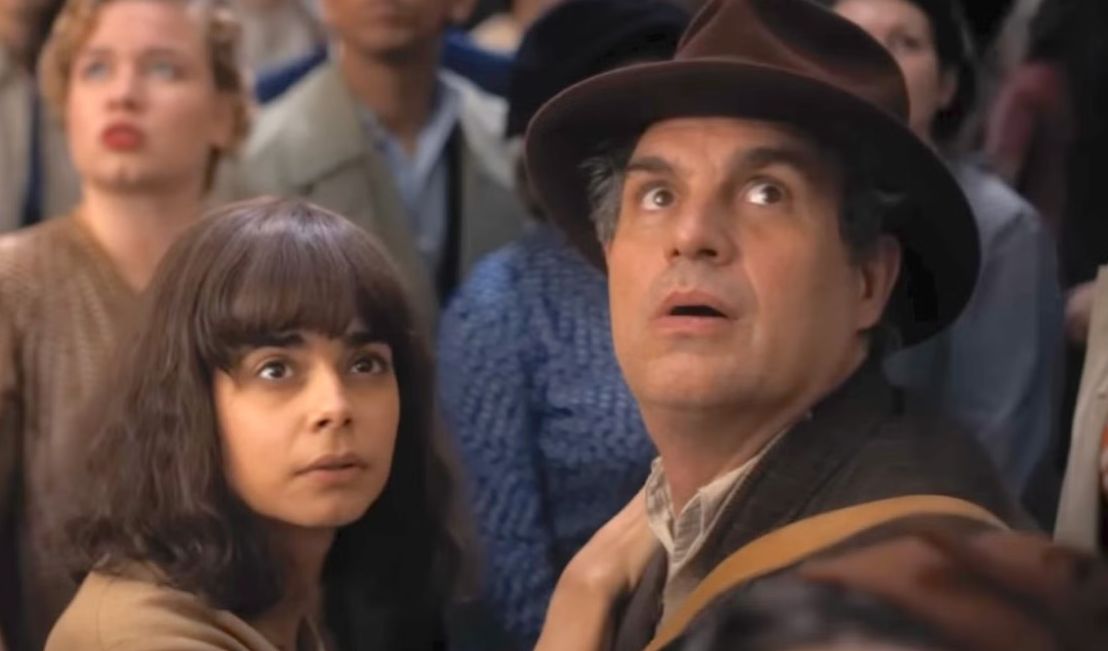Suppose you were taken back in time to the dark days of World War II, when the most incredible bonds were made under the most dire circumstances. This is exactly what “All the Light We Cannot See,” the new Netflix four-part series, claims to provide. The story of Netflix’s “All the Light We Cannot See” revolves around two young people named Marie-Laure and Werner who are living during World War II. As they deal with the difficulties of war, their lives entwine.
Blind Marie-Laure is a French child who escapes Paris during the Nazi occupation of her country with her father. German boy Werner is compelled to enlist in the military because of his aptitude for radio technology. The show delves into their individual travels, providing a distinct viewpoint on the conflict and the remarkable bonds they forge throughout these trying times. tvacute will examine if the intriguing premise of this eagerly awaited series is based entirely on fiction or on a real story in this post.
All the Light We Cannot See Release Date, Plot, True Story, Cast, Location and Trailer
Is All the Light We Cannot See From Netflix Based on True Story?
No, the Netflix series “All the Light We Cannot See” is not based on a true story. It is an adaptation of Anthony Doerr‘s fictional work, which is set against the backdrop of World War II and won the Pulitzer Prize. The narrative is the result of Doerr’s imaginative creativity, spurred by a variety of occasions and encounters, such as train travel during which he witnessed a passenger’s annoyance at a disconnected phone conversation and a trip to Saint-Malo, France.
In 2004, a train excursion provided the impetus for this incredible tale. Anthony Doerr saw the annoyance of a traveler whose phone call ended inside a tunnel. He thought about the marvel of long-distance communication and how it would be viewed in a different era after this seemingly ordinary episode. Doerr imagined a narrative that took place amid the chaos of World War II, a time when such communication would in fact be seen as miraculous.
Doerr’s trip to Saint-Malo, France, in 2005 proved to be a turning point in his writing of this tale. This charming village had a remarkable past because it was almost completely destroyed during World War II and then meticulously restored. Doerr was struck by the juxtaposition between the city’s old feel and its recent destruction, which led him to decide to put his work during this time.
His vision of Saint-Malo was of a youngster, imprisoned in the city, listening to a girl read Jules Verne’s “Twenty Thousand Leagues Under the Sea” on the radio. This scene—rich in human connection and symbolism—became a focal point of the book.
Doerr rejected the typical cliches connected to war narratives in order to craft a unique novel about World War II. His goal was to go beyond the conventional wisdom that portrayed the Nazis as pure evil and the French resistance as charming heroes. Rather, his goal was to investigate the intricacies of people’s actions in times of war, highlighting the ethically dubious nature of people’s decisions.
In order to strike this balance, Doerr wrote the French story about a gifted young girl with a disability and the German story about a woman who is tragically entangled in Nazism. He exposed readers to Reinhold von Rumpel as the epitome of the archetypal wicked Nazi figure, in order to balance the sympathetic picture of a Nazi figure.
It was not an easy road to bring “All the Light We Cannot See” to life. Anthony Doerr spent ten years writing and conducting research. For additional research, he traveled to Germany, Paris, and Saint-Malo as well as perused diaries and letters from World War II. One significant obstacle he encountered was his weak proficiency in French and German, which required the utilization of resources such as Google Translate. Still, his devotion to historical realism enabled him to incorporate minute details, such as real voice transcripts and German radio manufacturer names, into the story.
The novel was a tough and satisfying project to write. Doerr wrote lyrically, thus he purposefully created short chapters to keep his work accessible to readers. The more than a hundred brief chapters, which switched between points of view, fit together like parts of a model home. He created a story that shifts between time and perspective by working on the beginning, middle, and end at the same time.
Finally, while “All the Light We Cannot See” on Netflix is an amazing work of historical fiction, it is not a factual story. The story is firmly grounded in historical reality, even though the events and people are the result of the author’s imaginative creativity. This gives readers and viewers a comprehensive insight into the complexity of human conduct during a time of conflict.
The process of writing this masterwork provides an insight into the mind of a gifted writer who finds inspiration in everyday experiences and is captivated by the unseen tales of ordinary people caught up in the turbulent maelstrom of World War II. Though “All the Light We Cannot See” isn’t a genuine narrative, it is unquestionably a true work of art that challenges us to consider the limits of human connection and fortitude in the face of adversity.
What You Stand to Lose if You Don’t Read “All the Light We Cannot See,” and Why You Should
